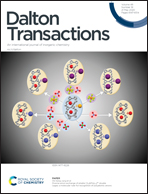A Z-type heterojunction of bimetal sulfide CuNi2S4 and CoWO4 for catalytic hydrogen evolution†
Abstract
Research into catalytic materials that convert light energy into chemical energy by decomposing water still faces great difficulties. CuNi2S4 has attracted public attention due to its unique morphology; however, its high electron–hole recombination rate and weak charge separation efficiency limit its use in the field of catalysis. Herein, CoWO4 material is synthesized in situ on a CuNi2S4 surface by a hydrothermal method; the Z-type heterointerface constructed by the surface contact of the two materials under fusion shows a huge promotion effect on the catalytic ability. The performance (3754.3 μmol g−1 h−1) of the composite material (CW/CNS-12%) reached 42 and 6 times those of the two monomer materials, respectively, and the excellent catalytic ability of the composite is also reflected in its long-term stability. The experimental data proves that the modification of CuNi2S4 by building a heterostructure can improve the specific surface area of the material and the amount of carriers it generates. The charge transfer caused by the existence of the heterojunction hinders the recombination of carriers and holes; fluorescence and electrochemical characterization further confirms the charge transfer process in the Z-type heterojunction. This research provides new insights to promote catalytic performance by building heterostructures between monomer materials.



 Please wait while we load your content...
Please wait while we load your content...